Last updated on
Discover essential tips for maintaining a safe, clutter-free kitchen environment as we explore effective strategies to prevent falls and mishaps in the heart of your home.
The kitchen is the heart of every home, where delicious meals are prepared and memories are made. However, it can also be a dangerous place if you’re not careful.
One of the most common accidents that occur in the kitchen is falling. With sharp knives, hot stoves, and slippery floors, it’s important to take precautions to prevent falls in this busy space.
In this article, we’ll share some tips on how to keep yourself and your loved ones safe while cooking up a storm in the kitchen. So grab a cup of coffee and let’s get started!
Key takeaways:
- Slippery Floors: Use non-slip mats and slip-resistant flooring.
- Proper Footwear: Wear closed-toe shoes with non-slip soles.
- Effective Lighting: Install overhead lights and task-specific lighting.
- Keeping Walkways Clear: Organize cabinets and remove clutter.
- Proper Storage and Organization: Declutter, use organizers, and non-slip liners.
What's Inside
Importance of Kitchen Safety
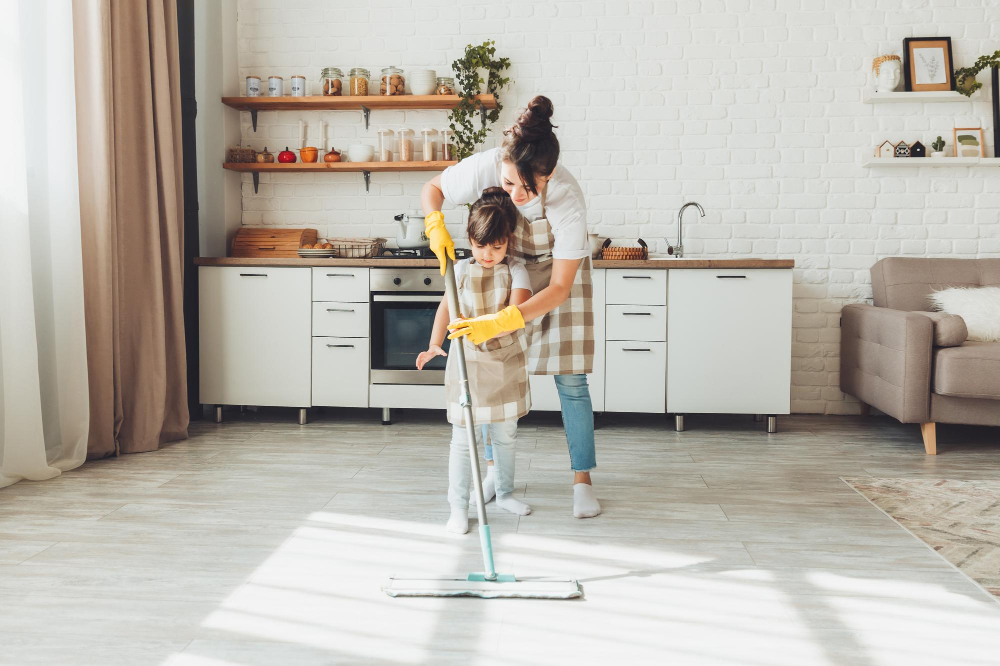
The kitchen is a place where we spend a lot of time, and it’s important to make sure that it’s safe for everyone who uses it. Kitchen safety should be taken seriously because accidents can happen in the blink of an eye.
A fall in the kitchen can result in serious injuries such as broken bones or head trauma, which could lead to hospitalization or even death.
Preventing falls and other accidents starts with understanding why they occur. Some common causes include slippery floors, cluttered walkways, poor lighting conditions, improper footwear and unsafe handling of appliances.
By taking steps to prevent these hazards from occurring you can ensure that your family members are safe while cooking up their favorite meals.
Slippery Floors: Causes and Solutions
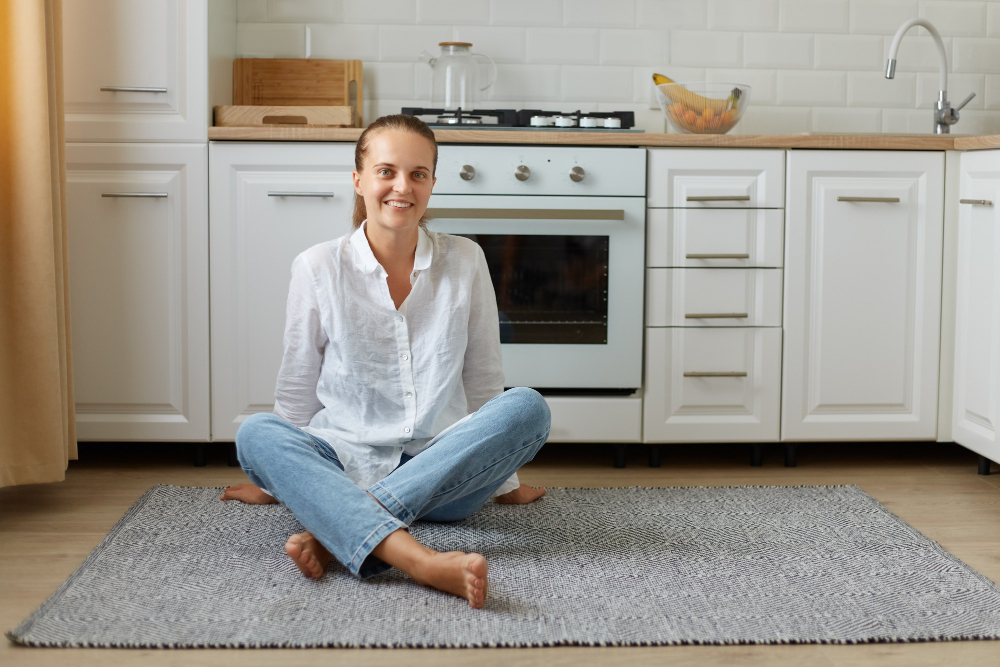
There are several reasons why your kitchen floor may be slippery, including spills, grease buildup, and moisture. It’s important to identify these potential hazards and take steps to prevent them.
One solution is to use non-slip mats or rugs in areas where water or other liquids may accumulate. These mats can provide extra traction for your feet and help prevent slips on wet surfaces.
Another option is to install slip-resistant flooring that provides a textured surface for better grip underfoot. This type of flooring comes in various materials such as vinyl, rubber or cork which offer excellent slip resistance even when wet.
Regular cleaning with appropriate products can also help reduce the risk of slips by removing any grease buildup from cooking oils or food spills that could make floors slicker than usual.
Proper Footwear for Kitchen Safety

Avoid wearing flip-flops, sandals, or high heels as they can easily slip off your feet and cause you to lose balance. Instead, opt for closed-toe shoes with non-slip soles that provide good traction on wet surfaces.
Investing in a pair of slip-resistant shoes specifically designed for kitchen use is also an excellent idea. These types of shoes have specially designed soles that grip onto slippery floors and reduce the risk of falling.
Remember to keep your footwear clean and dry at all times while working in the kitchen.
Effective Lighting to Prevent Falls
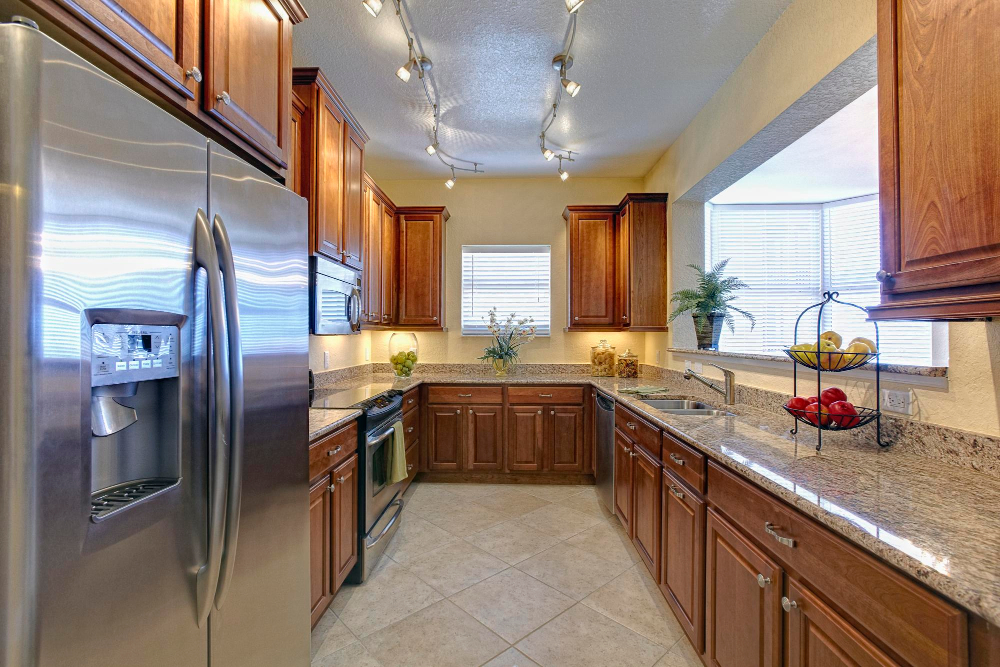
A well-lit kitchen not only helps you see what you’re doing but also highlights potential hazards such as spills and clutter on the floor. It’s important to have a combination of natural and artificial light sources that provide adequate illumination throughout your workspace.
To achieve effective lighting, consider installing overhead lights or pendant lamps above work areas, under-cabinet lights for countertop tasks, and task-specific lighting for cooking surfaces. You can also use dimmer switches to adjust brightness levels according to your needs.
If possible, maximize natural light by keeping windows unobstructed during daylight hours. This will not only brighten up your space but also help regulate circadian rhythms which can improve sleep quality at night.
Proper lighting is crucial in maintaining a safe environment while working in the kitchen.
Keeping Walkways Clear
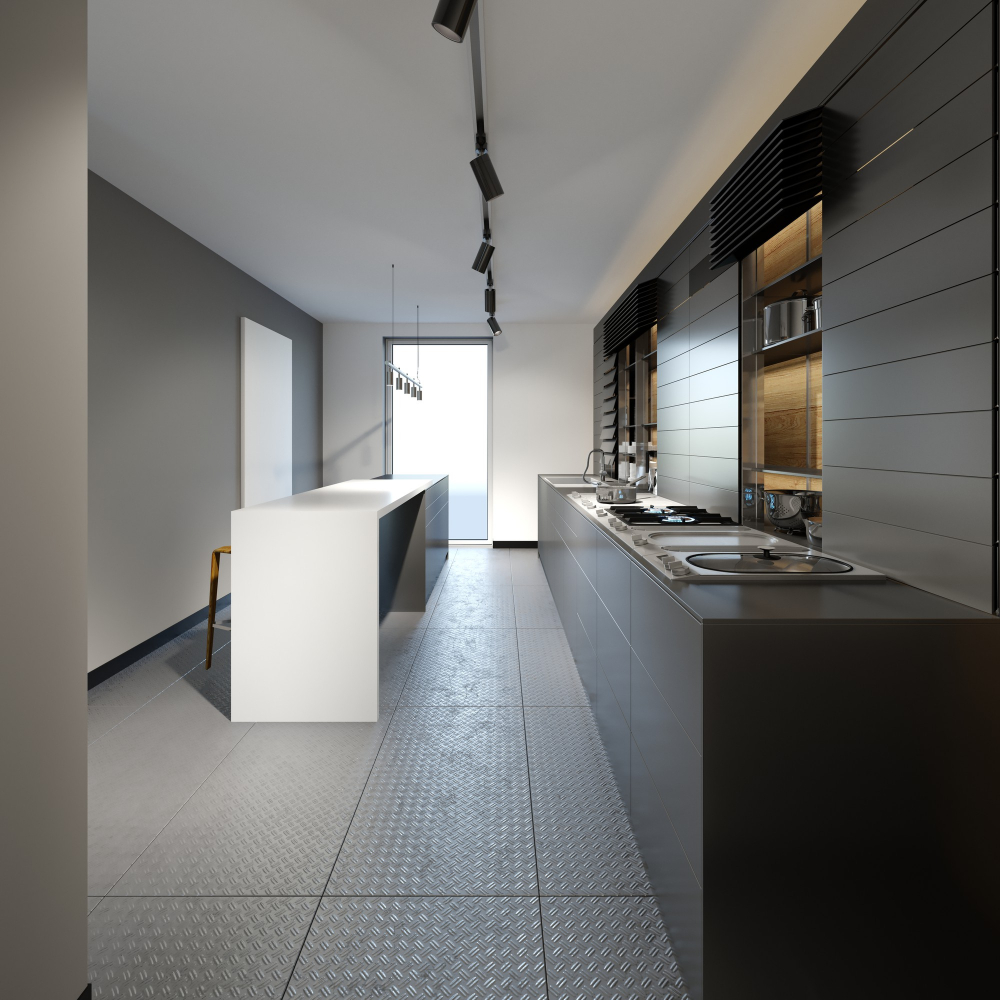
To prevent this, it’s important to keep walkways clear and free from clutter. This means removing any items that don’t belong in the kitchen, such as shoes or toys, and making sure all appliances and cords are properly stored away when not in use.
Another way to keep walkways clear is by organizing your cabinets and drawers so that everything has a designated place. This will help you avoid leaving things out on countertops or tables where they can easily be knocked onto the floor.
If you have limited storage space, consider investing in some hanging racks or shelves to maximize vertical space while keeping your countertops free from clutter.
Proper Storage and Organization
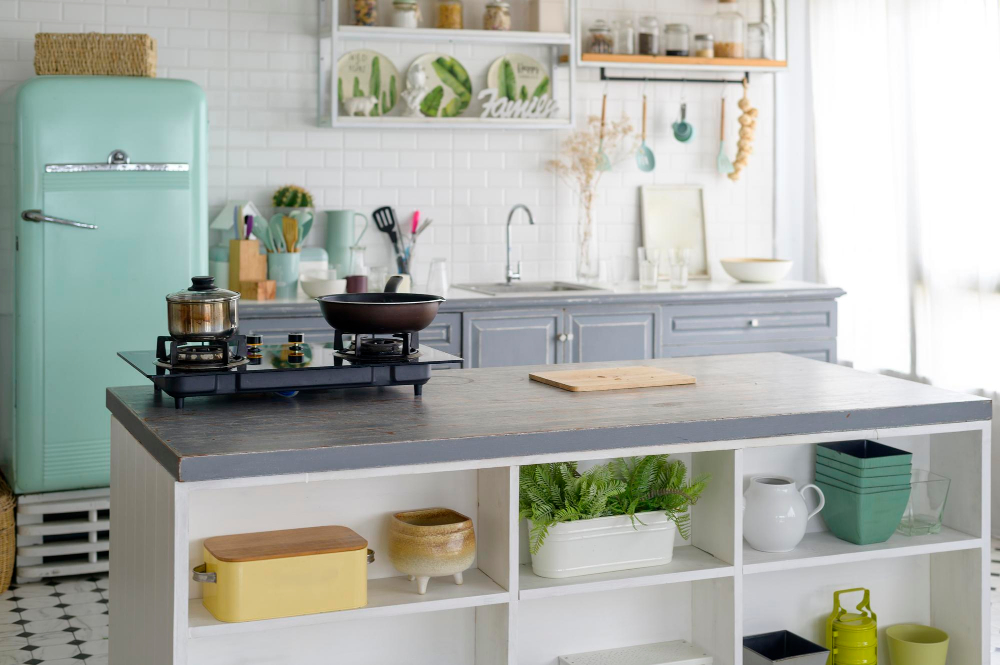
A cluttered kitchen can be a recipe for disaster, especially when you’re trying to move around quickly. To avoid tripping over items on your countertops or floors, make sure everything has its designated place.
Start by decluttering your cabinets and drawers regularly. Get rid of any broken or unused items that are taking up valuable space.
Invest in organizers such as drawer dividers, shelf risers, and spice racks to maximize storage space while keeping things tidy.
When storing heavy pots and pans, keep them at waist level so that you don’t have to reach up high or bend down low when retrieving them from lower shelves.
Also consider using non-slip liners for your drawers and shelves; this will help keep dishes from sliding around during use or when opening/closing doors too quickly.
Securing Rugs for Stability
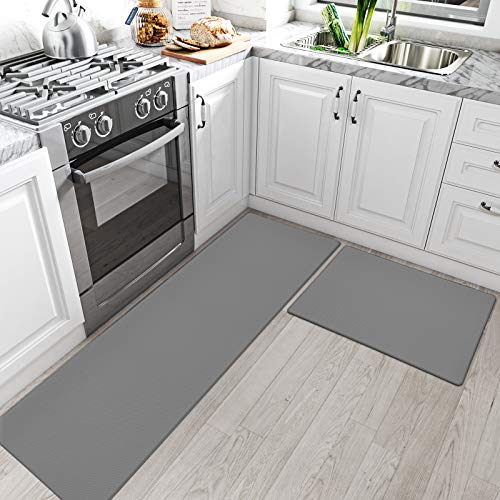
To prevent falls caused by rugs, it’s important to use non-slip rug pads or double-sided tape underneath them. These products will help keep the rug in place and prevent it from sliding around when you walk on it.
Another option is to choose rugs with rubber backing that provides extra grip on the floor surface. It’s also essential to ensure that the edges of your rugs are flat against the ground so that they don’t curl up or create a trip hazard.
By taking these simple steps, you’ll be able to enjoy all of the benefits of having a beautiful rug in your kitchen without worrying about potential accidents caused by slipping or tripping over them.
Managing Electrical Cords
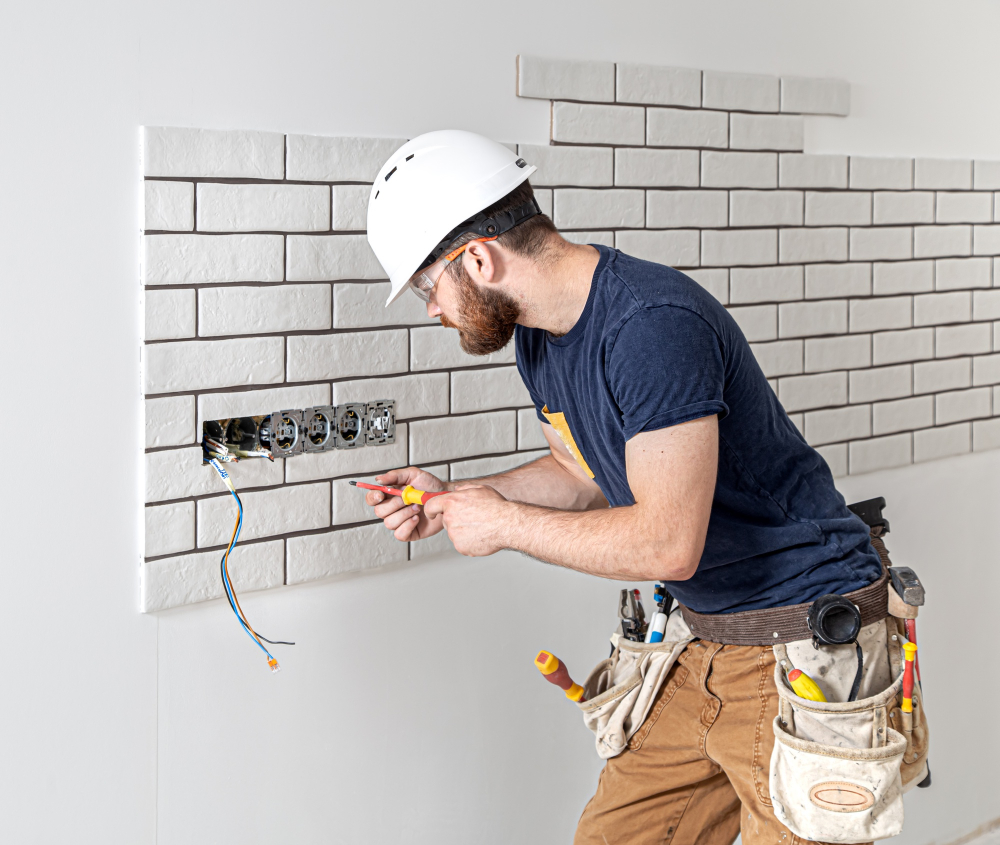
However, they can also be a tripping hazard if not managed properly. To prevent falls caused by electrical cords:
– Keep them away from walkways: Avoid running electrical cords across high traffic areas or where people may trip over them.
– Use cord organizers: Cord organizers help keep your cables neat and tidy while preventing tangles that could cause accidents.
– Tape down loose wires: If you have any loose wires hanging around your kitchen area, tape them down to prevent anyone from accidentally tripping on them.
By taking these simple steps to manage your electrical cords in the kitchen area, you can significantly reduce the risk of falls due to tangled or misplaced wiring.
Safe Handling of Appliances
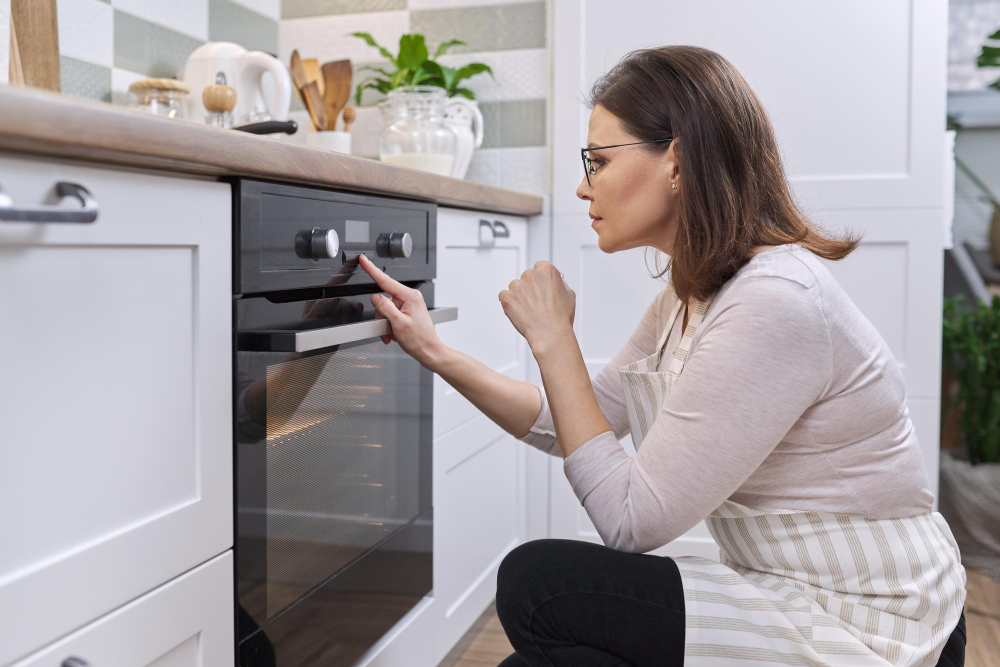
To prevent falls and other accidents in the kitchen, it’s important to use your appliances with care. When using heavy or bulky items like blenders or mixers, make sure they’re placed on a stable surface before turning them on.
Avoid placing hot pots and pans near the edge of counters where they could easily be knocked over.
When lifting small appliances such as toasters or coffee makers from high shelves, use proper lifting techniques by bending at the knees instead of straining your back muscles. Always unplug electrical devices when not in use and avoid touching them with wet hands.
Keep appliance cords out of walkways to prevent tripping hazards while cooking up a storm in your kitchen.
Proper Kitchen Cleanup
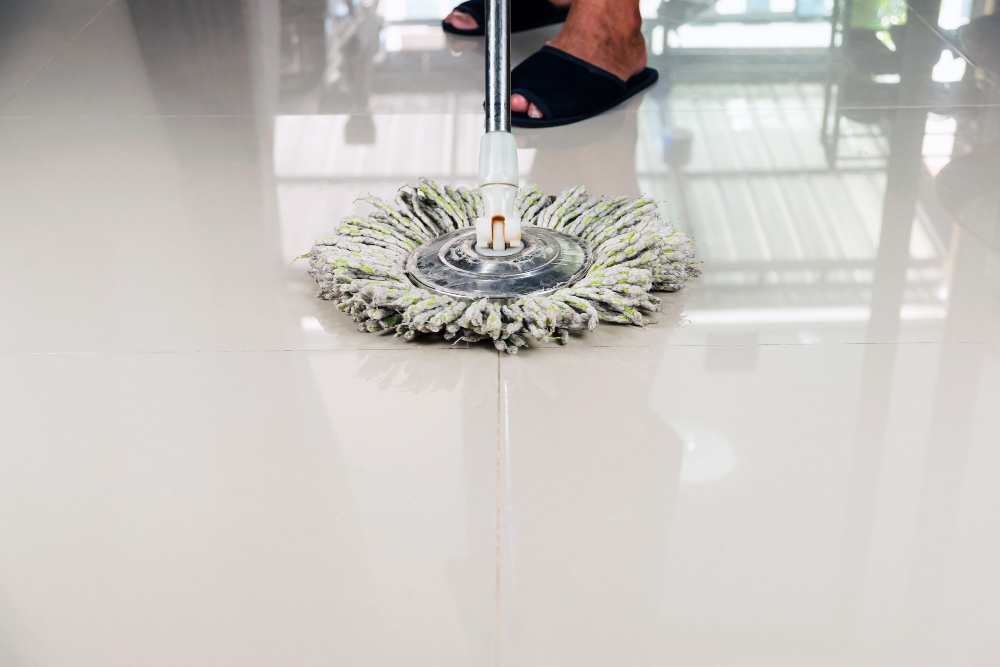
However, this can lead to potential hazards and accidents. Proper kitchen cleanup is essential in preventing falls in the kitchen.
Start by wiping down all surfaces with a clean cloth or sponge. This includes countertops, stovetops, and tables.
Make sure that any spills are cleaned up immediately as they can create slippery spots on your floor.
Next, sweep or vacuum your floors regularly to remove any crumbs or debris that could cause you to slip and fall. Mop your floors using warm water mixed with mild detergent at least once a week.
It’s also important not to overload yourself when carrying dishes from one place to another while cleaning up after meals; instead of trying too much at once make multiple trips if necessary so you don’t risk dropping anything heavy on the way there!.
Installing Non-Slip Surfaces
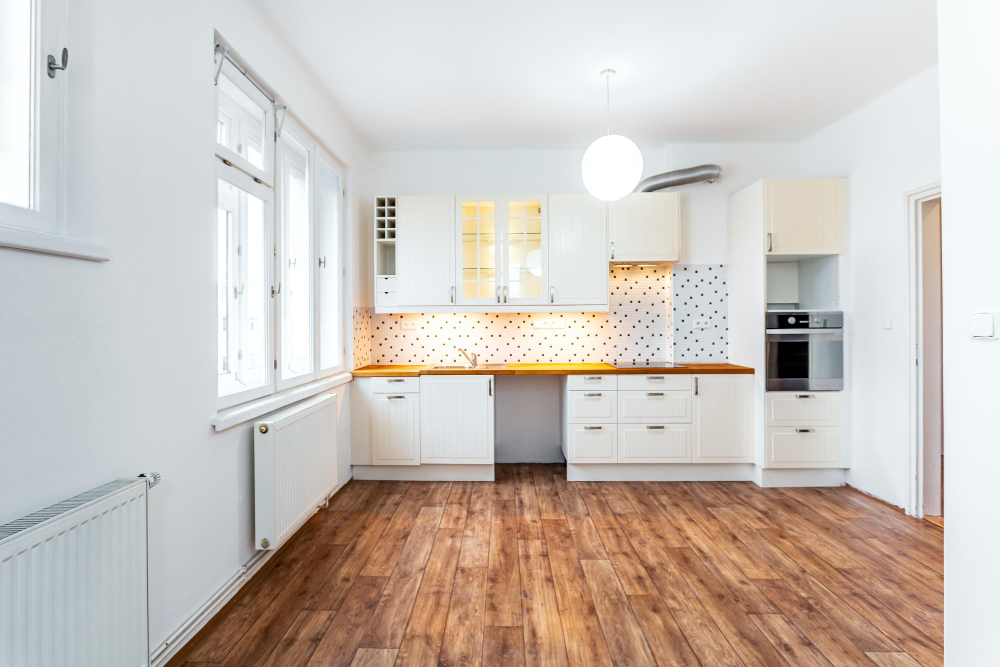
These can be applied to floors, countertops, and even cutting boards. There are several options available on the market today that offer varying degrees of slip resistance.
For flooring, consider using materials such as cork or rubber which provide excellent traction and are easy to clean. If you prefer a more traditional look, opt for textured tiles or mats specifically designed for high-traffic areas like kitchens.
Countertops can also benefit from non-slip surfaces such as silicone mats or grip pads placed under appliances like blenders and mixers. Using a cutting board with non-slip feet will help keep it stable while you chop away.
Identifying Potential Hazards
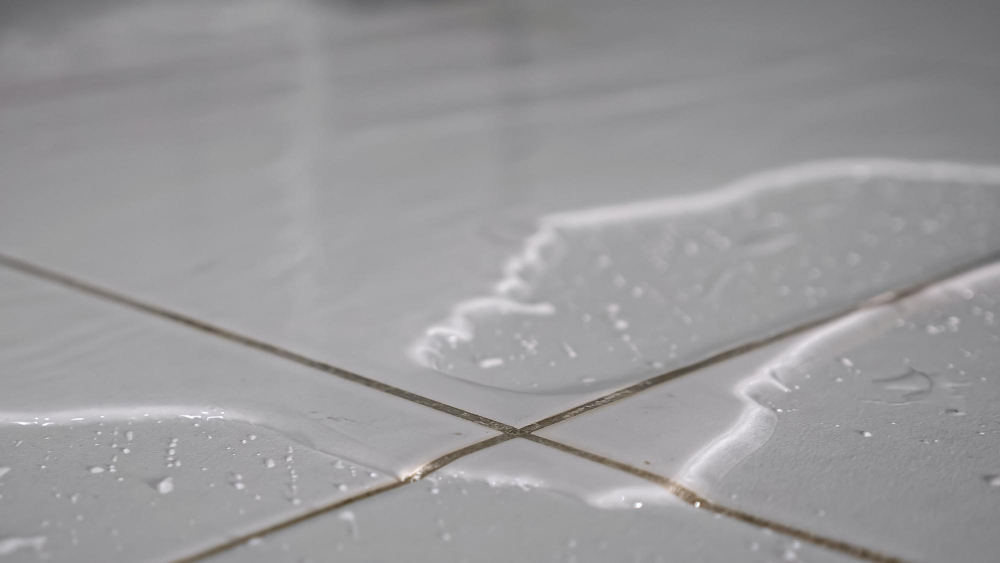
This means taking a closer look at your kitchen and assessing any areas that could pose a risk for you or your loved ones.
Start by examining the layout of your kitchen. Are there any obstacles that could cause someone to trip or fall? For example, are there cords from appliances lying across walkways? Is furniture placed too close together, making it difficult to move around freely?
Next, take note of any slippery surfaces in your kitchen. Check if spills have been cleaned up promptly and thoroughly.
Also, consider installing non-slip mats under sinks and near cooking areas.
Another area where potential hazards can arise is with electrical appliances such as blenders or mixers with exposed blades; ensure they are unplugged when not in use.
Safe Lifting Techniques
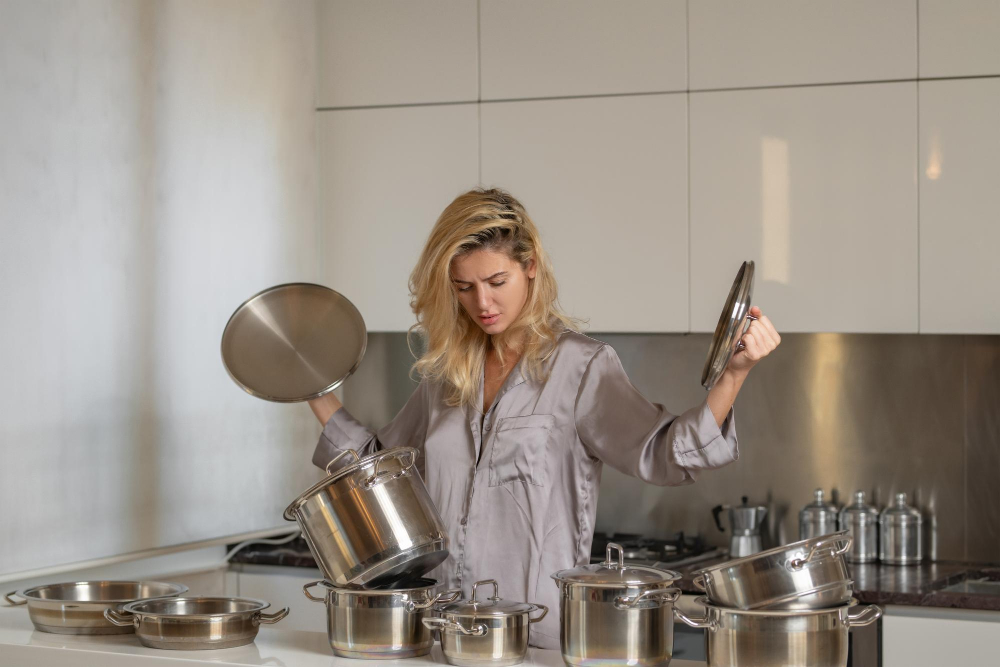
Lifting heavy objects improperly can cause back strain and other injuries that could lead to a fall. To avoid this, always bend your knees and keep your back straight when lifting anything heavy.
Use both hands to lift the object and hold it close to your body for better balance.
If you need help with a particularly heavy item, don’t hesitate to ask someone else for assistance or use equipment like dollies or carts if available. It’s also important not to overestimate what you can handle on your own – if something feels too heavy or awkwardly shaped, get help before attempting any lifts.
Sturdy Step Stools and Ladders
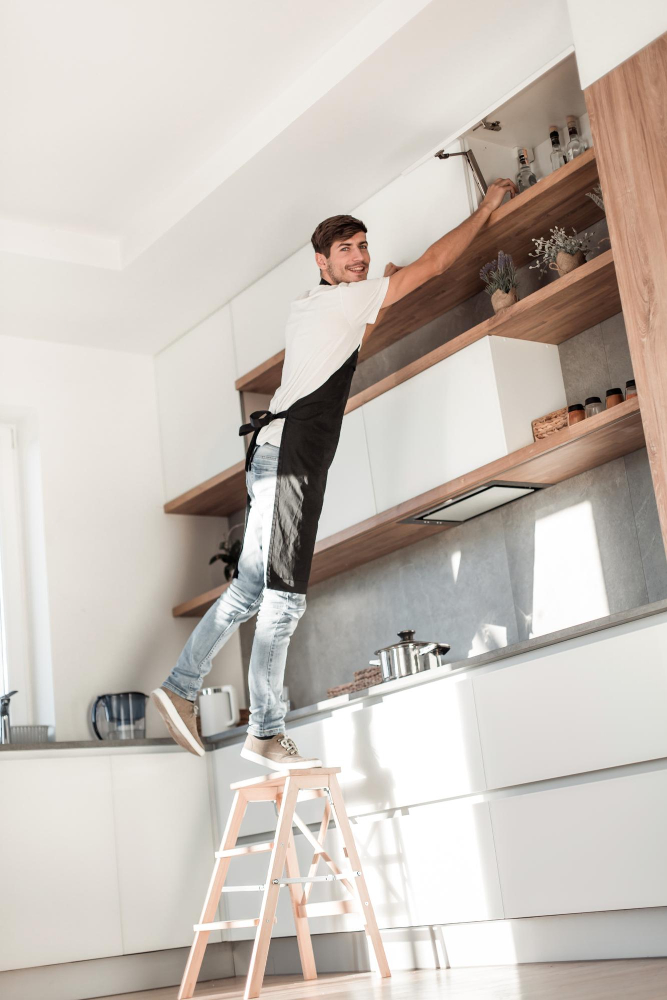
However, they can also be a source of danger if not used correctly. To prevent falls while using step stools or ladders, make sure they are sturdy and stable before climbing on them.
When selecting a step stool or ladder for your kitchen, choose one that is made from durable materials such as metal or wood. Avoid plastic models as they may not provide enough stability for heavier individuals.
Before stepping onto the stool or ladder, ensure it is placed on a flat surface with all four legs firmly planted on the ground. If possible have someone hold it steady while you climb up.
It’s important to note that standing at the top rung of any ladder can be dangerous; therefore always use an appropriate height level based on what needs to be reached without overreaching which could cause imbalance leading to falls.
Addressing Spills Immediately

Whether it’s water from washing dishes or oil from cooking on the stove, spills should be cleaned up as soon as possible. To prevent accidents caused by spills in your kitchen, keep a clean towel or mop nearby at all times.
If you spill something on the floor while cooking or cleaning up after dinner, don’t wait until later to clean it up. Wipe it away with a damp cloth right away before anyone has time to step on it accidentally.
It’s also important to make sure that any spilled liquids are completely dry before walking over them again.
Quality and Non-Slip Flooring
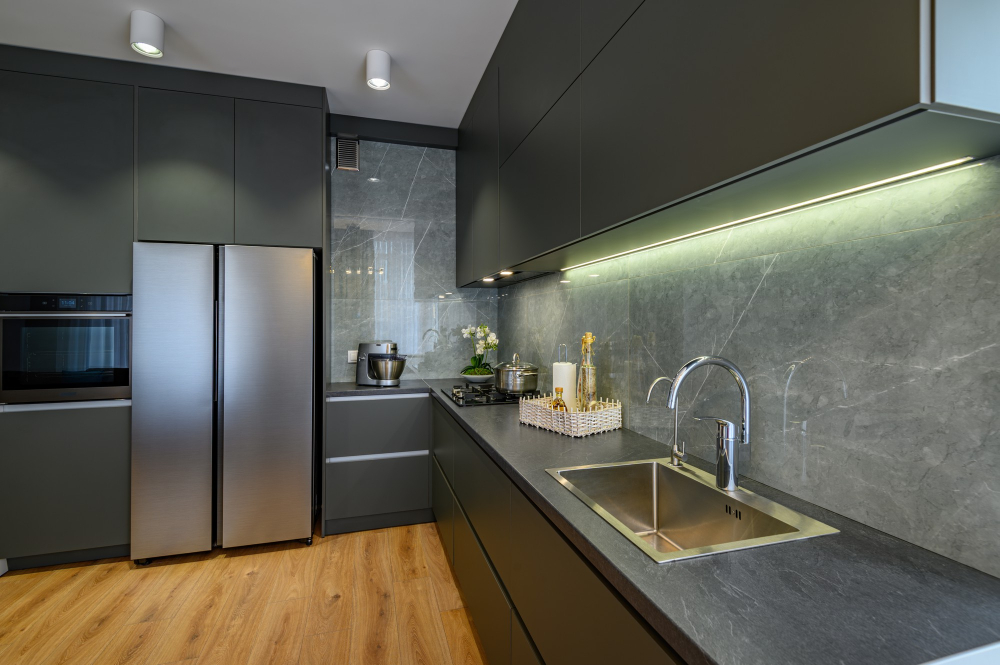
It’s essential to choose high-quality, non-slip flooring that provides adequate traction even when wet. Avoid using tiles with a glossy finish or polished surfaces as they tend to be slippery, especially when water spills on them.
Instead, opt for materials like vinyl or linoleum that have textured finishes and provide excellent grip underfoot. These types of floors are also easy to clean and maintain.
If you prefer the look of tile floors, consider installing slip-resistant coatings or adding non-slip mats around areas where water is frequently used such as sinks and stovetops.
Investing in quality flooring may seem expensive at first but it’s worth it if it prevents accidents from happening.
Clutter-Free Kitchen Area

Not only does it make it difficult to move around, but it also increases the risk of tripping and falling. To prevent falls in the kitchen, you need to keep your workspace clean and organized.
Start by decluttering your countertops and cabinets. Get rid of any items that you no longer use or need.
Store appliances that are not frequently used in a cabinet or pantry instead of leaving them on the counter where they can take up valuable space.
Make sure all drawers and cabinets are closed properly after use to avoid bumping into them accidentally while walking around the kitchen area.
If possible, invest in additional storage solutions such as shelves or hanging racks for pots, pans, utensils etc., so everything has its place within easy reach without taking up too much space on counters or floors.
Avoiding Burns and Scalds
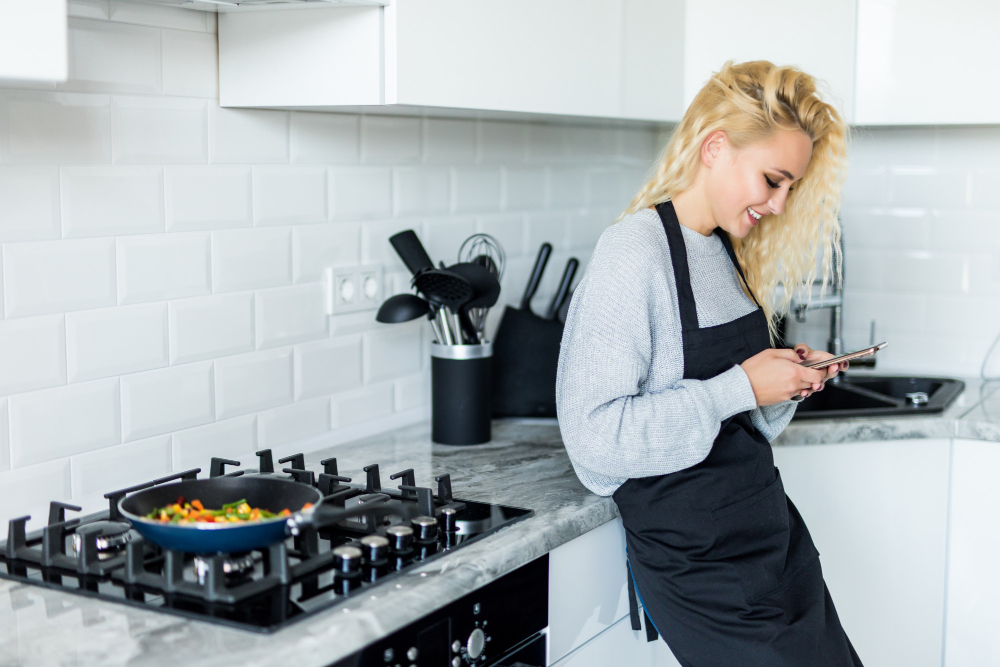
Hot stoves, boiling water, and hot oil are just a few of the hazards in the kitchen that can lead to burns or scalds. To avoid these types of accidents, it’s important to take some precautions.
Firstly, always use oven mitts or potholders when handling hot pots or pans. Never try to grab them with your bare hands as this could result in severe burns.
Secondly, be careful when working with boiling liquids such as soups or sauces. Always stir slowly and carefully so you don’t splash any liquid on yourself.
Thirdly keep children away from cooking areas while preparing food because they may accidentally touch something hot which could burn them severely. Lastly never leave anything cooking unattended on the stove especially if there is a risk of spilling over which could cause fire outbreaks leading not only to physical harm but also property damage.
Kid and Pet Proofing
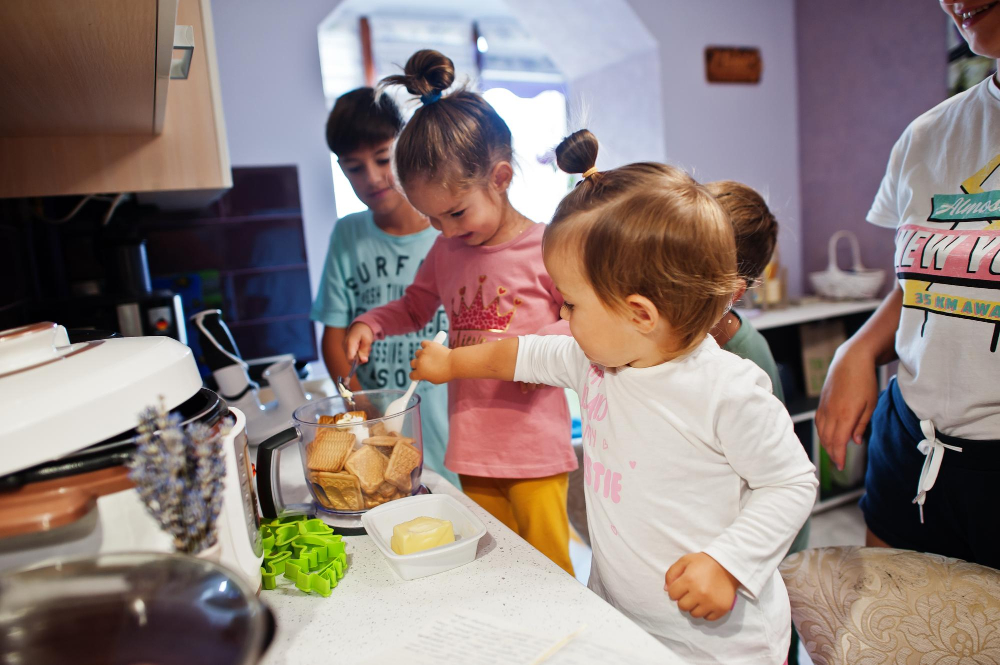
To prevent falls and accidents, it’s essential to kid-proof and pet-proof your kitchen. Start by installing safety gates to keep young children out of the kitchen when you’re cooking or cleaning up.
Keep sharp objects like knives, scissors, and graters out of reach in locked drawers or cabinets.
Pet owners should ensure that their furry friends don’t have access to food scraps or other hazardous items on countertops or floors. Store pet food securely away from human food sources as well.
Fall Prevention for Seniors
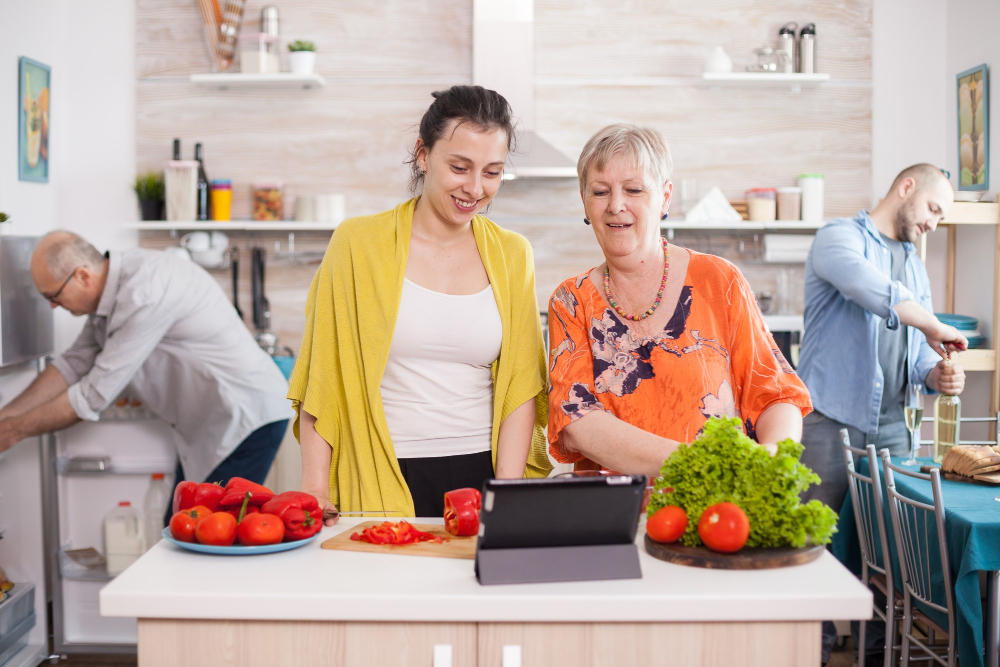
According to the Centers for Disease Control and Prevention (CDC), one in four Americans aged 65+ falls each year, making it a leading cause of injury among seniors. In the kitchen, this risk is even higher due to slippery floors and sharp objects.
To prevent falls in the kitchen for seniors, there are several precautions that can be taken. First off, make sure all walkways are clear of clutter or any obstacles that could trip someone up.
Install non-slip flooring or add non-slip mats where necessary.
Seniors should also wear proper footwear with good traction when cooking or cleaning in the kitchen area. Avoid loose-fitting clothing as well since it can get caught on appliances or other items.
It’s important to have adequate lighting throughout your home but especially so in areas like kitchens where accidents can happen quickly if you’re not careful! Make sure light switches are easily accessible from all angles so you don’t have trouble finding them when needed most!.
Lastly, consider investing in assistive devices such as sturdy step stools with handrails for reaching high cabinets safely without risking a fall! With these simple steps put into practice daily by seniors living alone at home will help reduce their chances of falling while preparing meals they love!.
FAQ
What are the most effective ways of preventing slips trips and falls within the kitchen?
To prevent slips, trips, and falls within the kitchen, maintain single-level, slip-resistant floors, install extra power points, ensure well-lit areas, and incorporate good drainage with slip-resistant grates.
What measures can be taken to ensure proper kitchen flooring and maintenance for fall prevention?
To ensure proper kitchen flooring and maintenance for fall prevention, regularly clean and remove spills, use non-slip materials, and professionally maintain the surface.
How can proper organization and storage in the kitchen reduce the risk of slips and falls?
Proper organization and storage in the kitchen reduces the risk of slips and falls by minimizing clutter and ensuring a clear, obstacle-free environment.
What are the essential guidelines for safe use of kitchen appliances, tools, and equipment to reduce fall hazards?
Essential guidelines for safe use of kitchen appliances, tools, and equipment to reduce fall hazards include keeping floors dry and clear, ensuring proper lighting, positioning appliances at a comfortable height, using slip-resistant mats, and using appropriate safety equipment.




